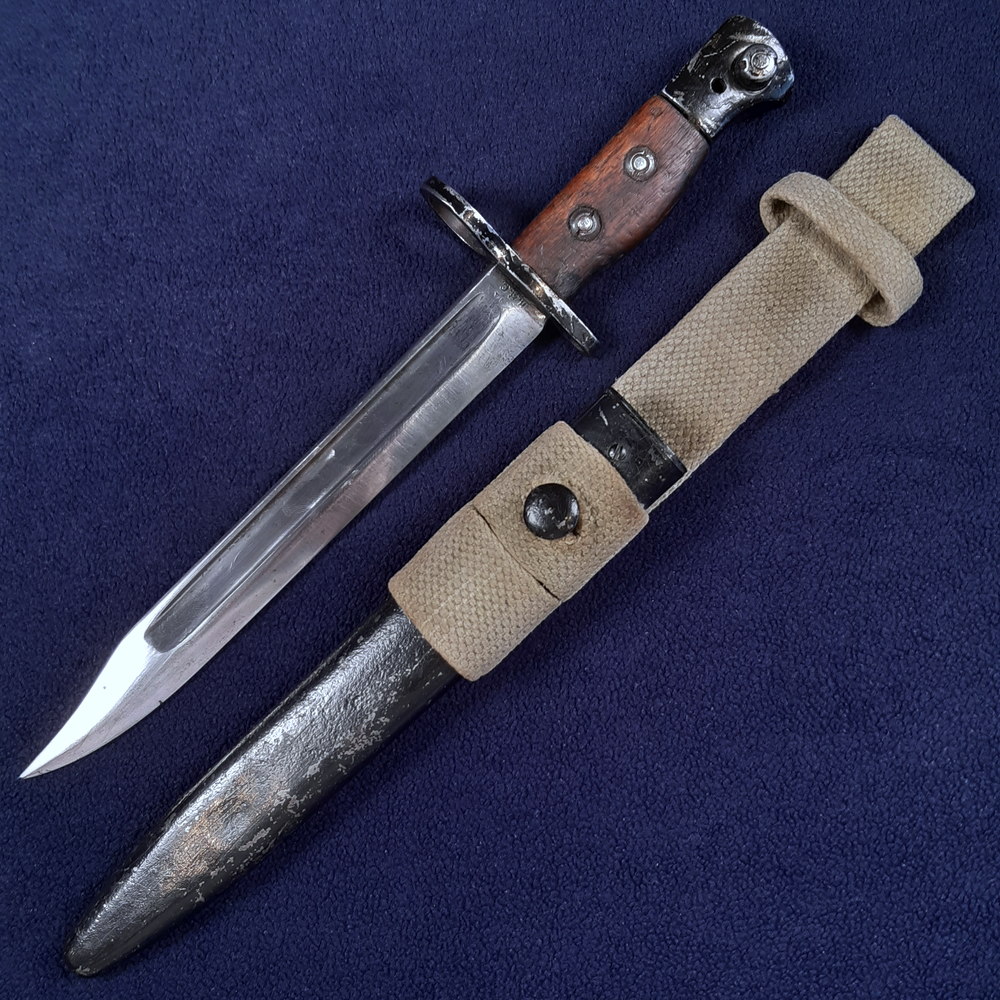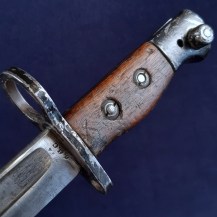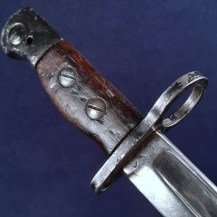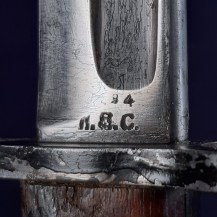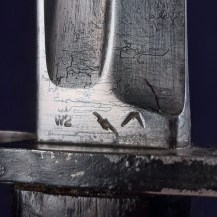British Lee Enfield No. 5 Jungle Carbine Bayonet by Wilkinson
Single-fullered bowie knife blade with clipped point. Wood scale grips secured with two screws. Mk I steel scabbard with flush mouthpiece, round frog stud and drainage hole at the chape. Green canvas frog with retaining loop.
The ricasso of the blade is stamped on one side with the maker’s mark ‘W.S.C.’ for the Wilkinson Sword Company and ‘_294’, the first two digits being rubbed. This would be S294, the wartime manufacturer code for Wilkinson. It is stamped on the other side with a broad arrow, a crown over ‘W2’ and an ‘X’ indicating the blade passed a manufacturer’s bending test.
The No. 5 Bayonet was developed during WW2 amidst ongoing discussions about the future of British bayonet design. The long 1907 Pattern sword bayonets were clearly a thing of the past, while the very short No. 4 spike bayonets were easy to manufacture but crude, and of little use as anything but a bayonet. The Armament Design Department based at Cheshunt designed a shortened knife blade bayonet, with prototyping done by Wilkinson. By 1943 the blade shape had settled on that of a Bowie knife, and production began at Wilkinson.
The No. 5 fitted to the new Lee Enfield No. 5 Mk I rifle designed at the same time: a shortened and lightened form of the No. 4 originally intended for airborne troops. In the event the No. 5 saw most use in the Far East, both during WW2 and in postwar conflicts, earning it the nickname ‘Jungle Carbine’.
This rifle had a new flared flash hider which made it incompatible with any older bayonets – the noticeably large muzzle ring of the No. 5 bayonet was shaped to accommodate it. It also fitted to the Sterling submachine gun designed in the same period. Around 330,000 No. 5 bayonets were manufactured between 1943 and 1945.
The blade is bright with a few spots of patination and a few very light track marks near the tip from sheathing and drawing. No damage to the edge, the tip of the blade has slightly chipped (<1mm). The bright finish, loss of blueing at the forte and rubbing to the blade stamps suggests that it has been repolished at some point. The hilt and pommel have a black painted finish with chipping revealing bright steel in places. The wood grips have scattered dents and some handling wear. The scabbard is painted black with some minor chipping and rubbing revealing steel. The frog has light rubbing in places and a couple of loose ends of stitching.

